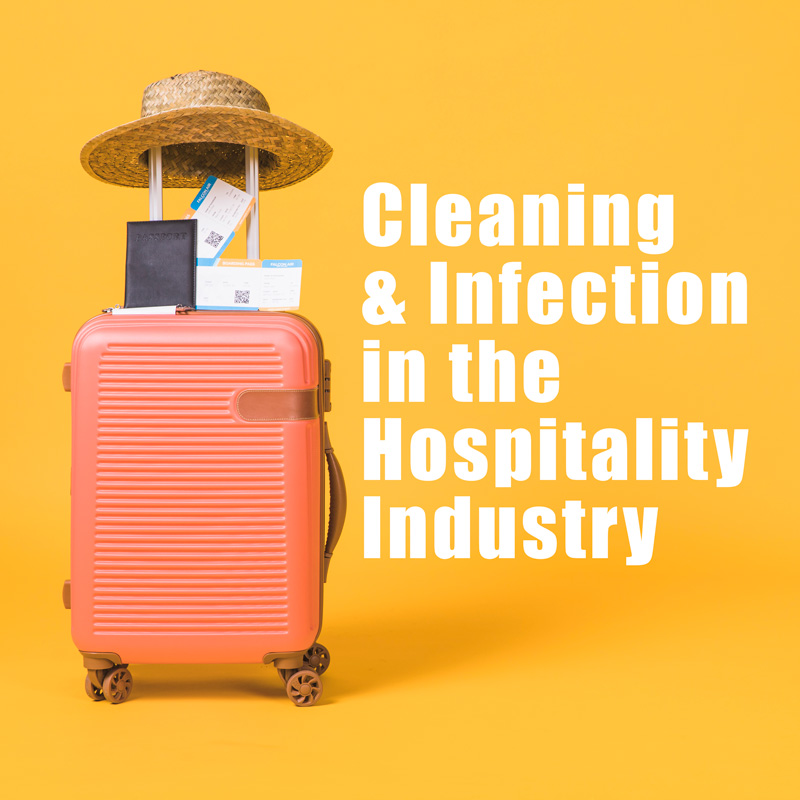
28 Feb Cleaning and Infection Control in the Hospitality Industry
News stories circulate about outbreaks of the new Coronavirus in tourist areas like cruise ships and hotels, leading to complete lockdowns. But this is just one of a number of pathogens that threaten the health and safety of guests and staff, not to mention the financial health and reputation of the business. It is completely understandable to feel a deep sense of dread if your business relies on tourism and you hear these news stories.
Good cleaning practice is a vital skill that is rooted with a good understanding of the fundamental principles of efficient planning, workflow, standards, health and safety, and a keen awareness of the visual impact cleaning has on the customers. However, at the front line in the battle against infection spreading is cleaning, but not just any cleaning. Poor cleaning and poor cleaning standards have been shown to significantly increase the risk of an infection spread.
Brand new for 2020 is a dedicated course for cleaning and infection control in the hospitality industry. This course is ideal for cleaners who work ‘front of house’ or ‘back of house’ in hotels, restaurants, bars, holiday homes or any tourist hot spot.
Contents
The course contains four main sections:
Section 1 – Principles of Infection Control – The first section starts with the important principles of how an infection spreads from person to person and lays the foundation for the risk posed by these pathogens and how cleaning acts to control the spread. It covers:
- The most common pathogens that you will encounter and where you are likely to find them
- The chain of infection
- Personal Protective Equipment
Section 2 – Good Cleaning Principles – This section takes the principles of infection control and applies them to practical cleaning in an efficient and well-planned way. The way we make cleaning efficient and well-planned is to introduce a new way of structuring and planning all cleaning operations, called Zone Cleaning. Zone Cleaning looks at planning all the cleaning routines in each and every room from the impact cleaning has on the organisation in terms appearance, hygiene, safety and fit for purpose. This important shift in focus to orienting cleaning on priority for both the organisation and the customer is essential for infection control.
Section 3 – Waste Handling – The sources of infection often start from waste, so this section looks in detail the steps you must take before handling waste that could pose an infection risk to staff and customers. This sections describes the procedures for:
- Search and clear operations where there are known or very likely hazardous wastes including needles
- Handling blood contaminated items
- Handling bodily fluids and deep cleaning afterwards
Section 4 – Health and Safety – Cleaning is potentially a hazardous occupation as you will be working with chemicals and often electrical equipment, but with the right knowledge and practice you will be able work safely in a wide range of working environments. In this part the following safety issues will be looked at:
- Cleaning Products – safe use, handling and storage
- Cleaning equipment – Electrically and manually powered
- General manual handling
- Safe working practices

